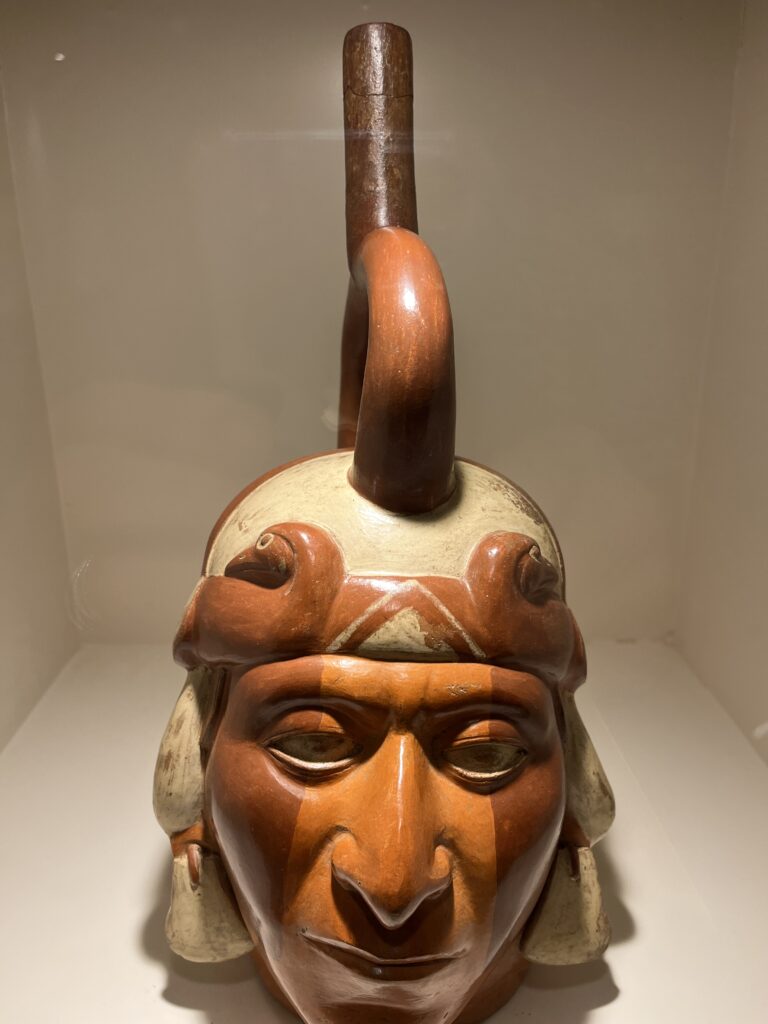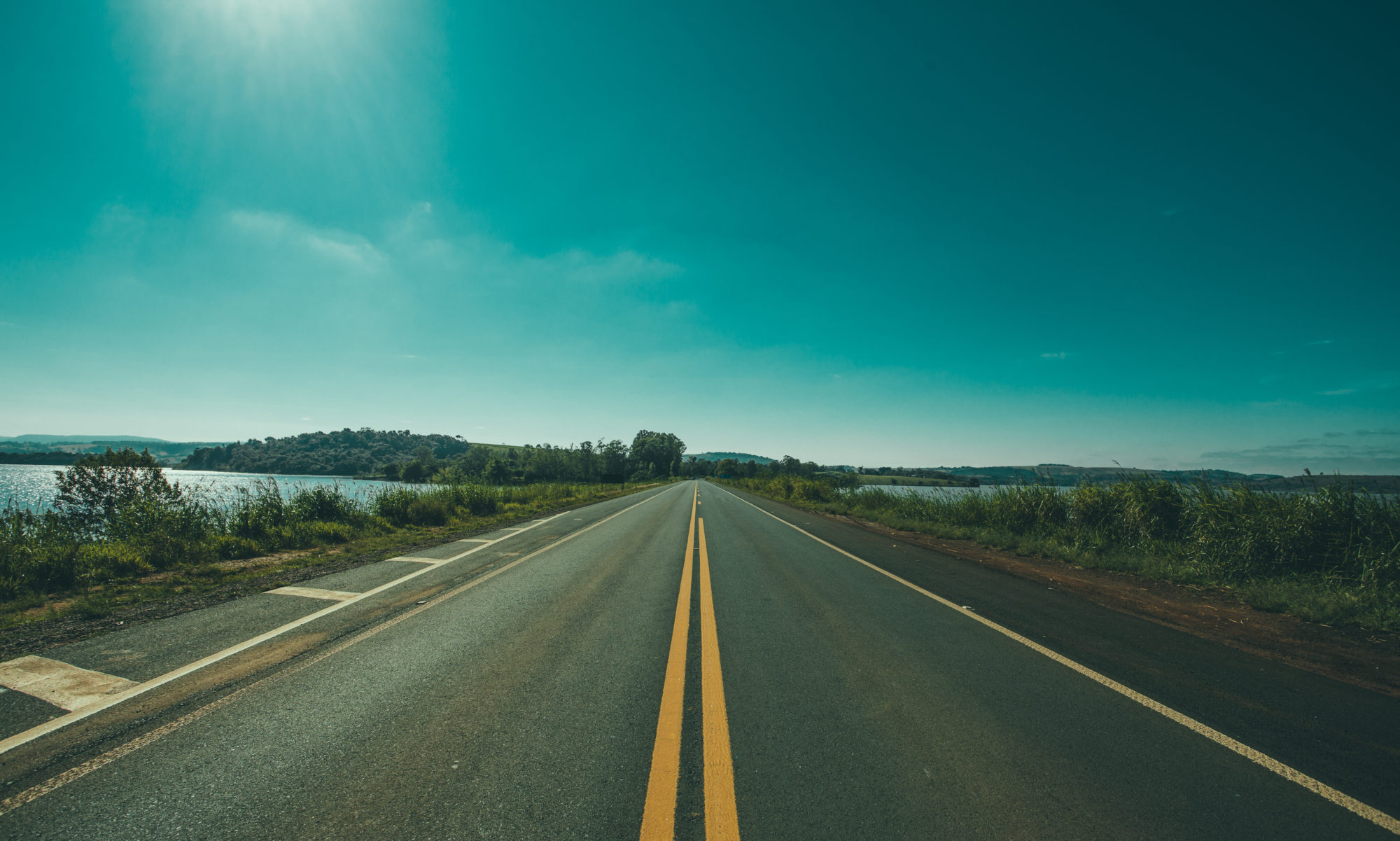I heard someone describe Arequipa as ‘the prettiest city in Peru’. That isn’t exactly how we’d describe it. Like most cities in Peru (in Latin America, for that matter), there is a picturesque colonial centre surrounded by ugly rings of auto parts shops, junkyards, clogged roads and slums.
Still, it’s the second largest city in the country, so we stop in for a few days.
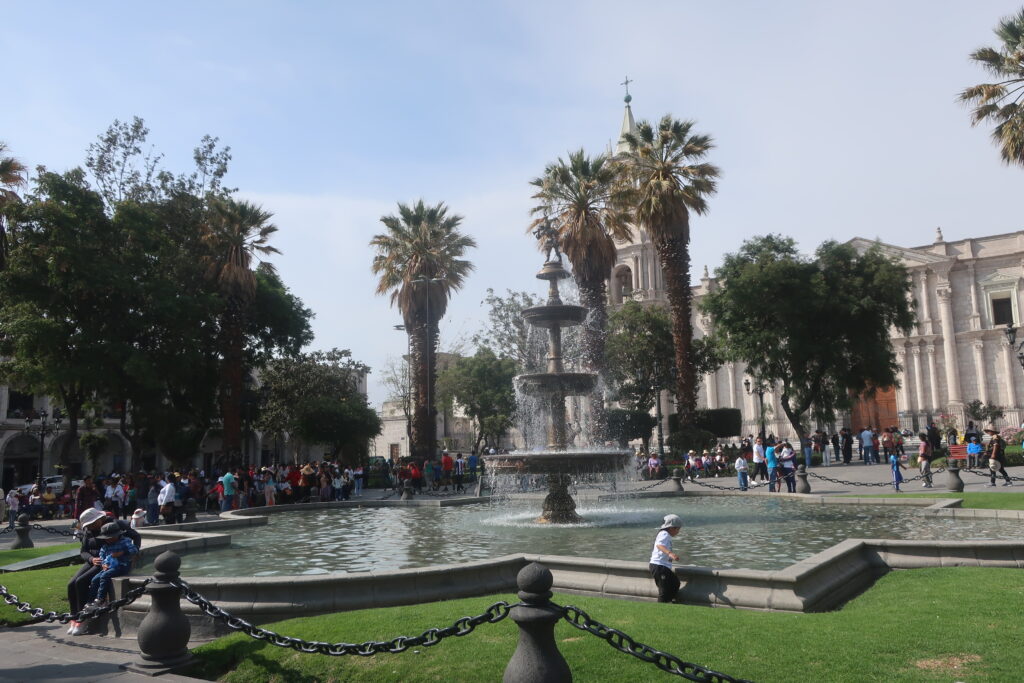
Many of the building are built of distinctive whitish stone called sillar.
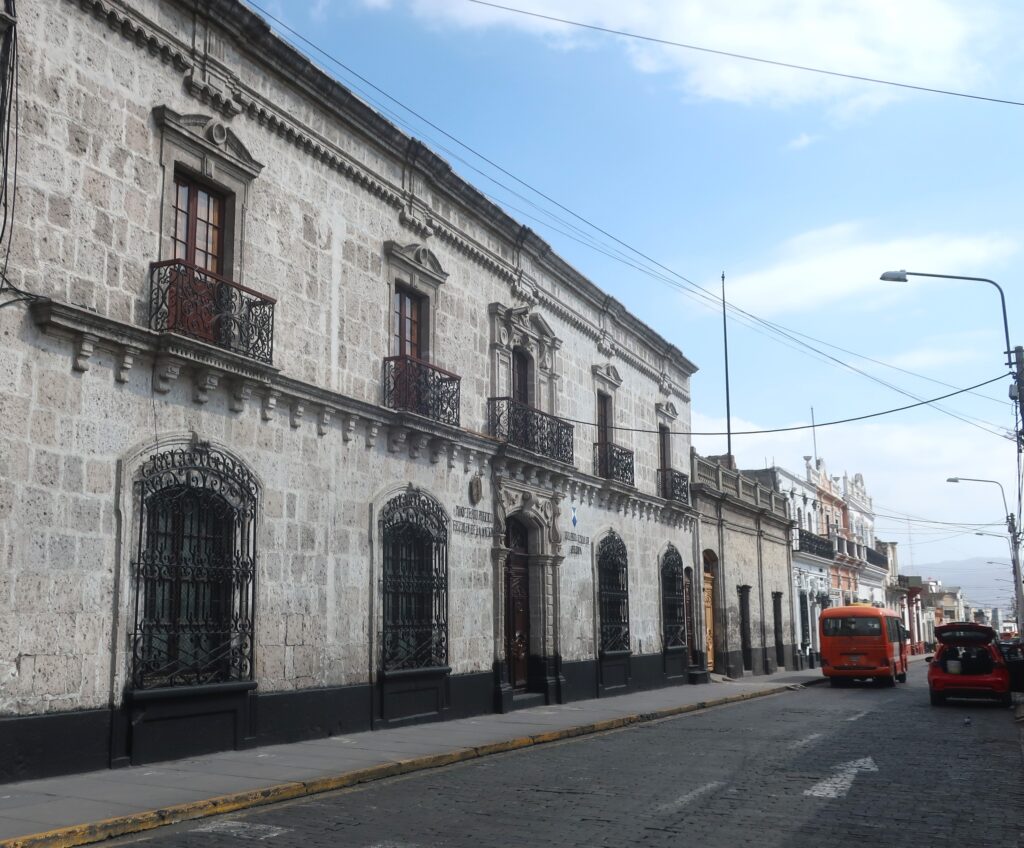
Our hotel has a tortoise in the garden named Lolo. He is surprisingly entertaining.
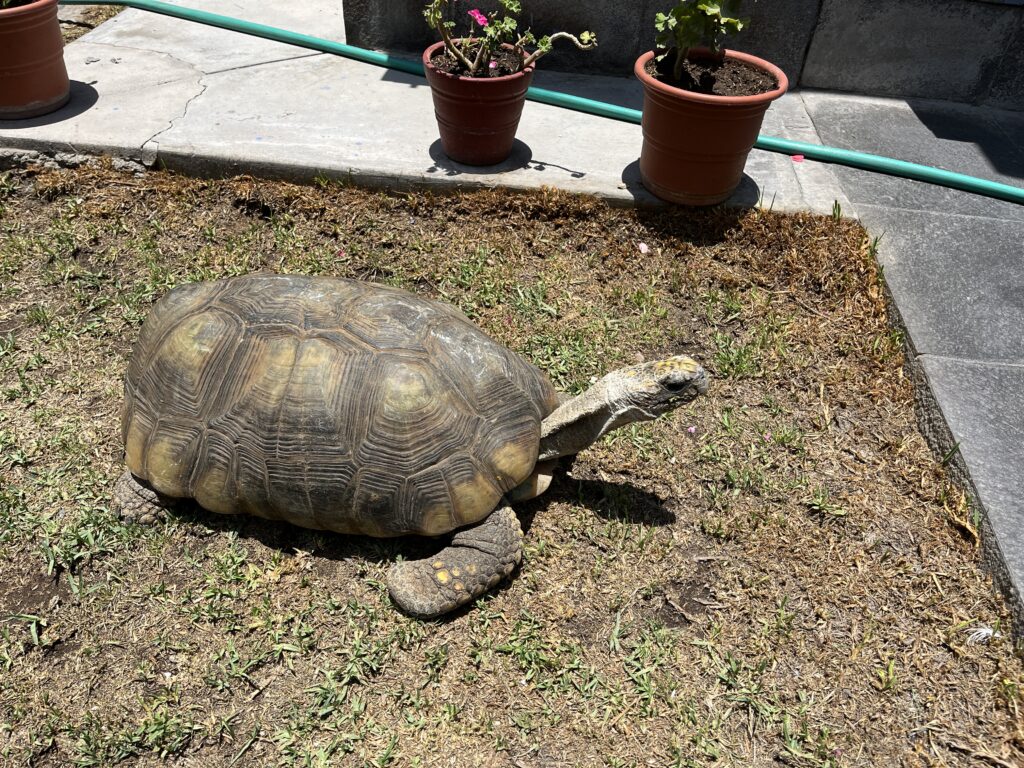
In the background here is the El Misti volcano. The linked article gives way more information than any normal person would want to know, but what we find interesting are the Inca mummies they have found on the top. Human sacrifices, experts reckon, of children to the mountain. The Gods everywhere and in all times demand blood.
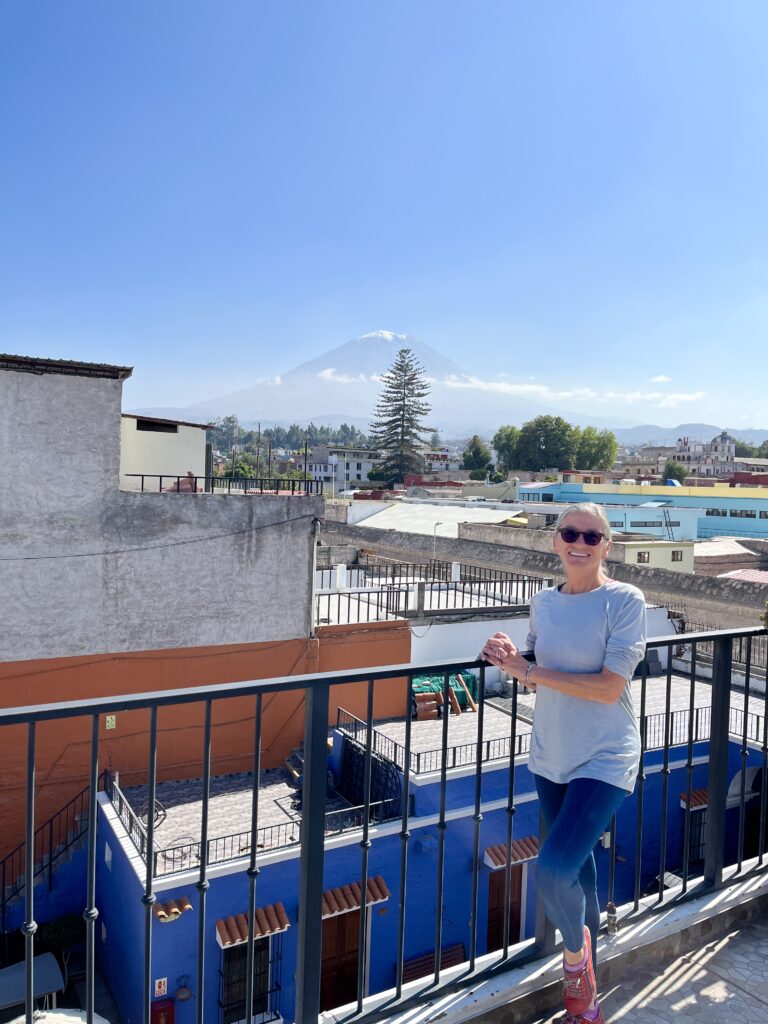
Of literary interest is the birthplace of Mario Vargas Llosa, a Nobel Prize-winning Peruvian novelist. The museum contains very well-done multimedia presentations of different epochs of the writer’s career. (All in Spanish.)

I remember in about, oh, 1980 I was in New Zealand and met a well-read South American. I asked if he could recommend a few Latin American authors. He provided the names Gabriel García Márquez (Colombia), Jorge Amado (Brazil), and Mario Vargas Llosa (Peru).
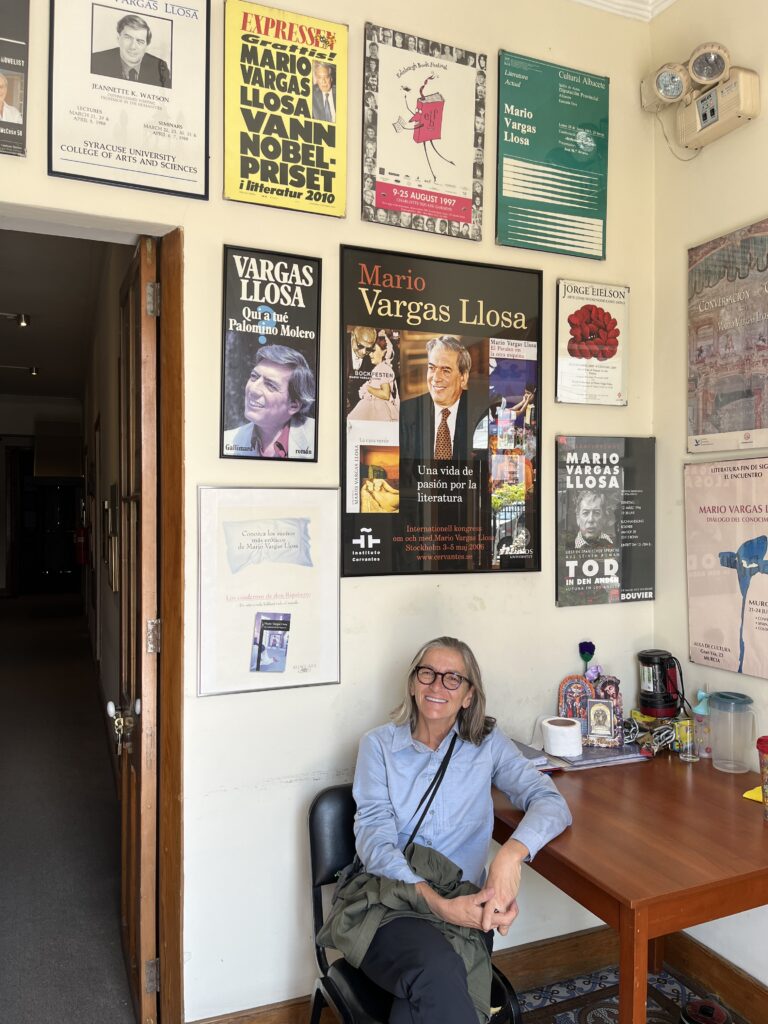
We do a day trip to the Colca Canyon. There are some really high mountains along the way.
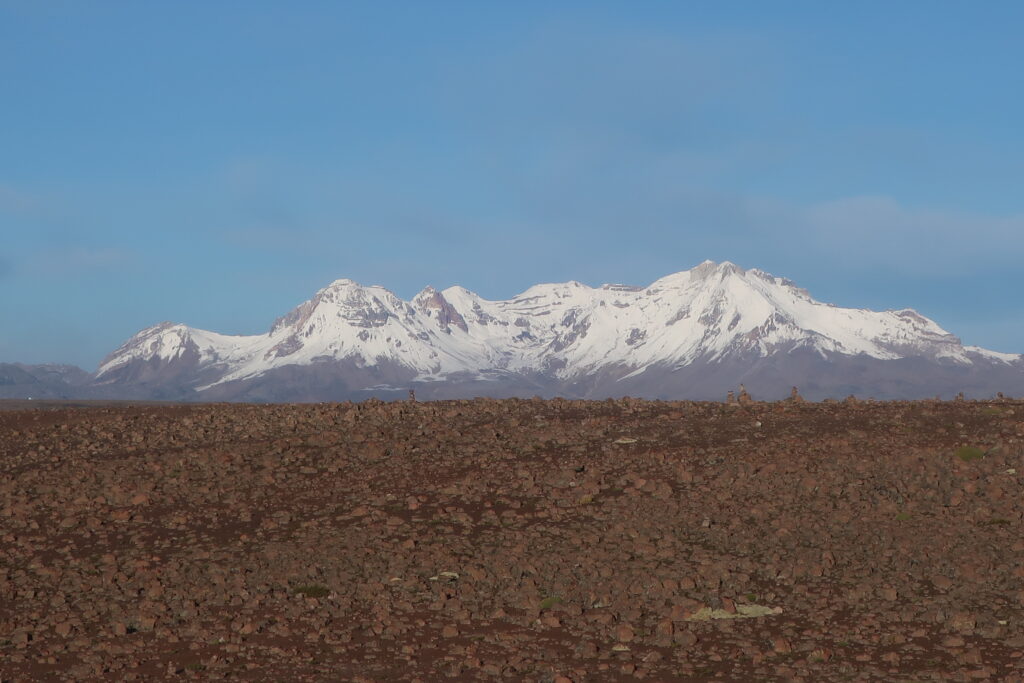
This area is popular with climbers and hikers. This time, we opt for the one-day bus tour.
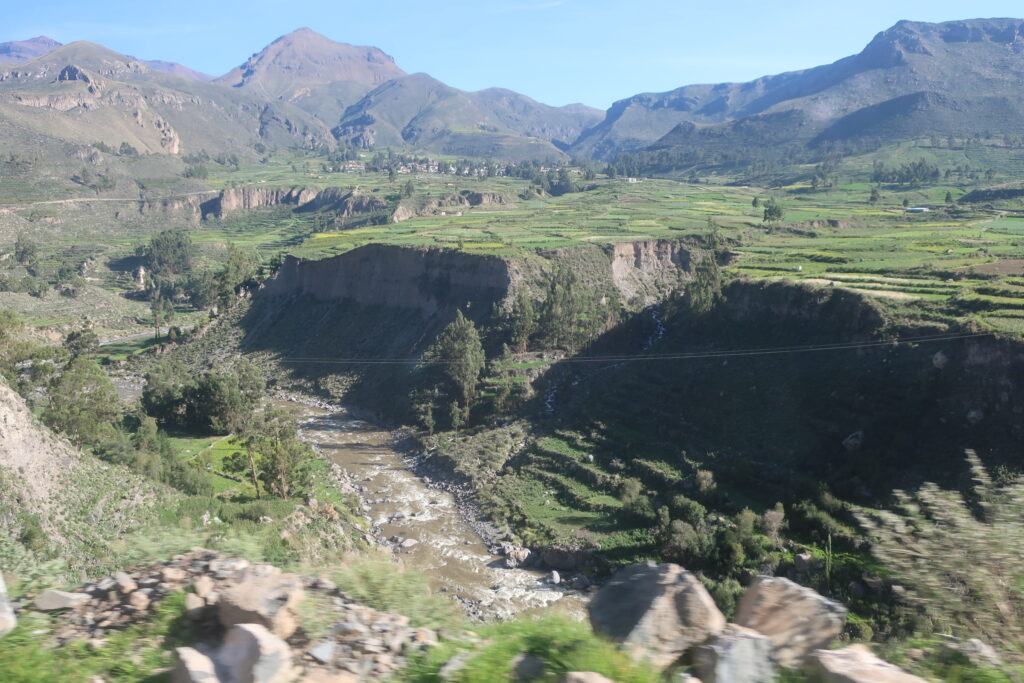
A brief stop in the village of Maca.
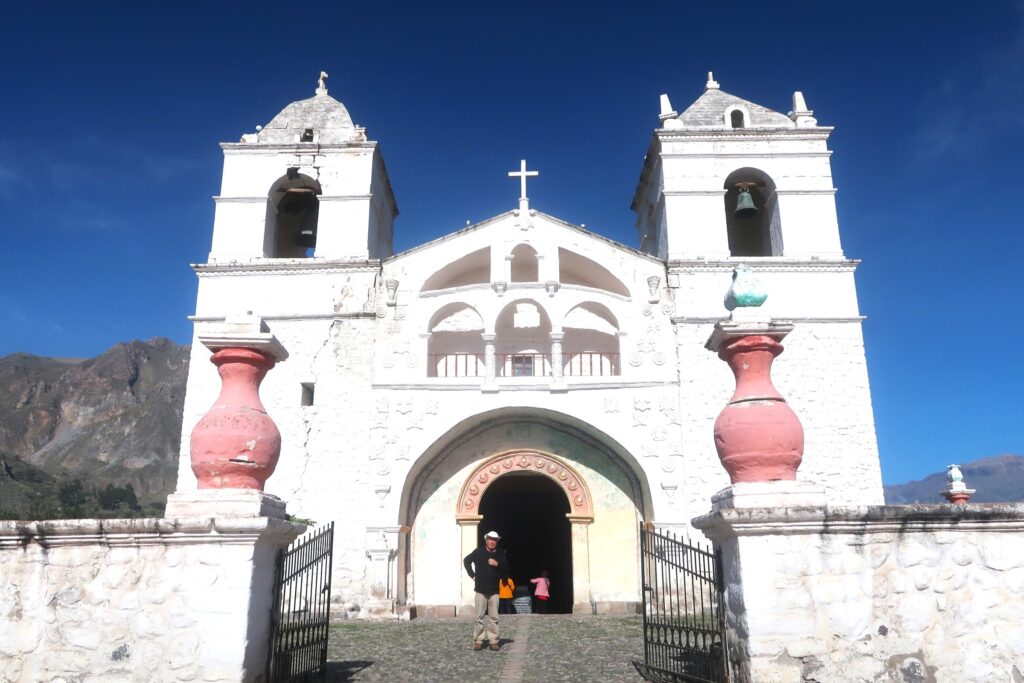
There are the usual ladies trying to thrust their baby alpacas into your arms. They don’t seem to have a problem if you simply take a photo of them holding the alpaca.
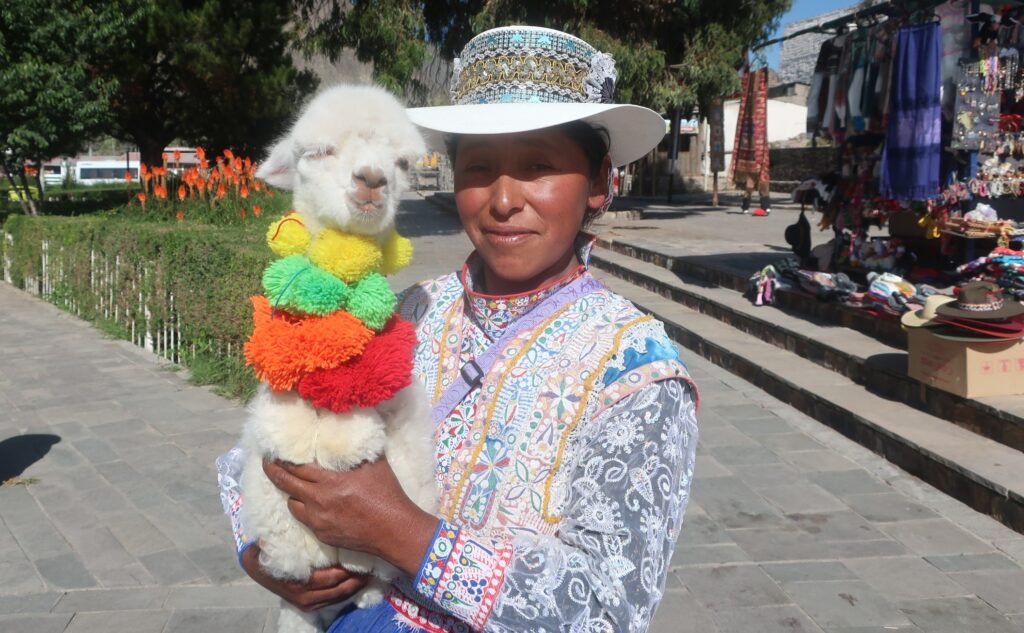
We stop in a place called the Mirador del Condor, where you might catch a glimpse of a condor, if you’re lucky.
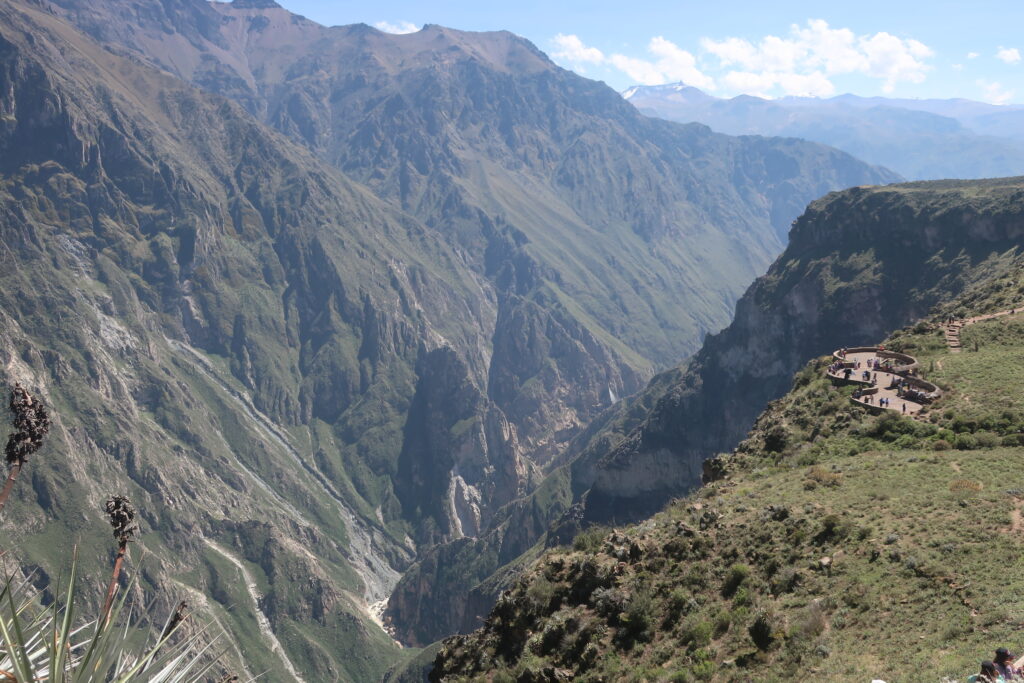
It’s a long day trip that begins in the middle of the night. We are happy to be heading back to town.
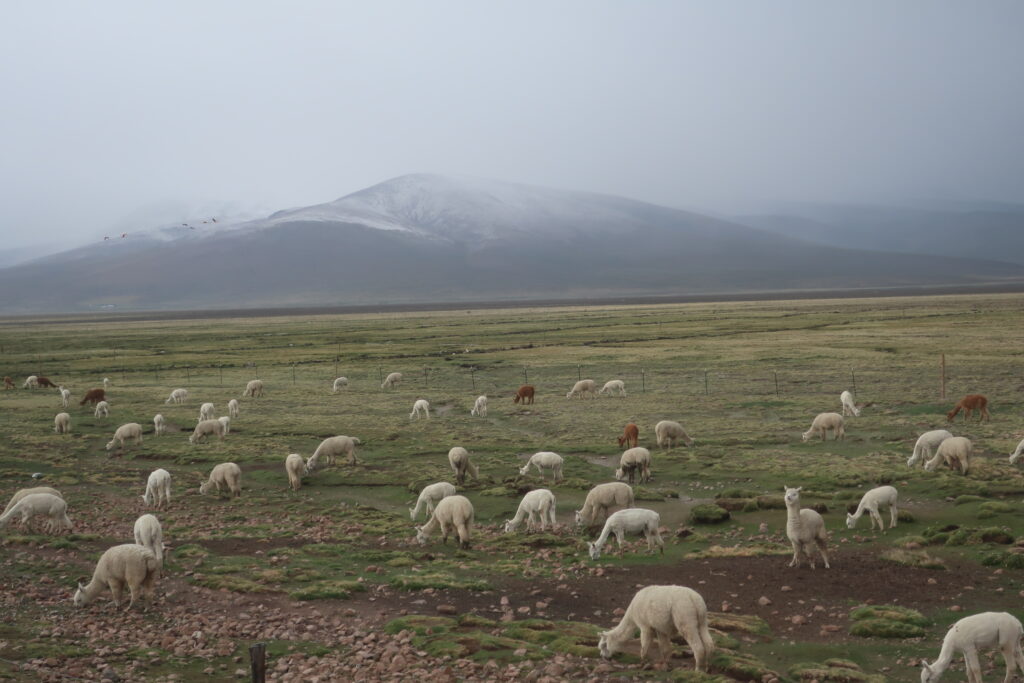
Next stop is Nazca. Our go-to bus line in Peru is Cruz del Sur. They are super-safe and comfortable.
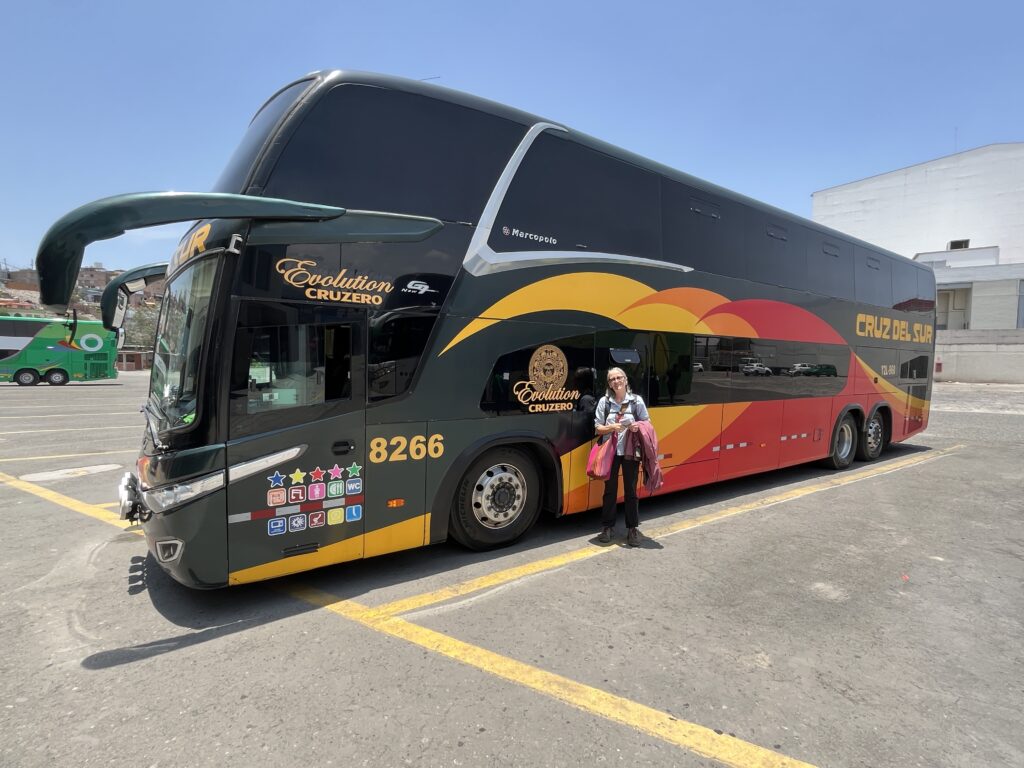
It takes about ten hours to get to Nazca, on the Pan-American Highway. There’s a lot of magnificent scenery along the way.
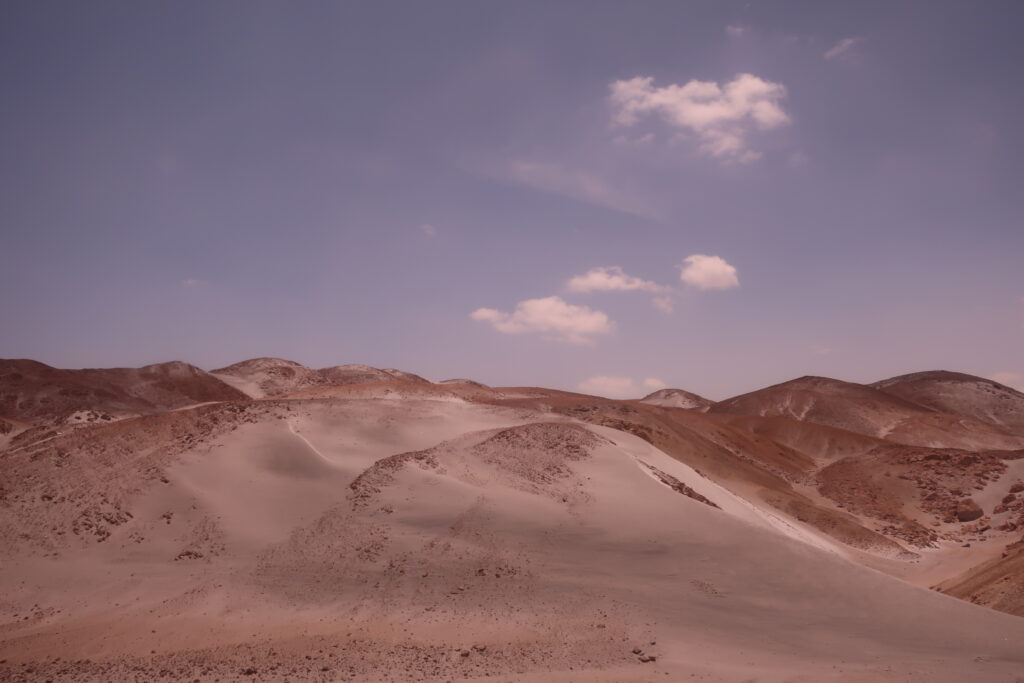
Much of the trip features the Pacific Ocean on one side and sheer, rocky outcrops on the other.
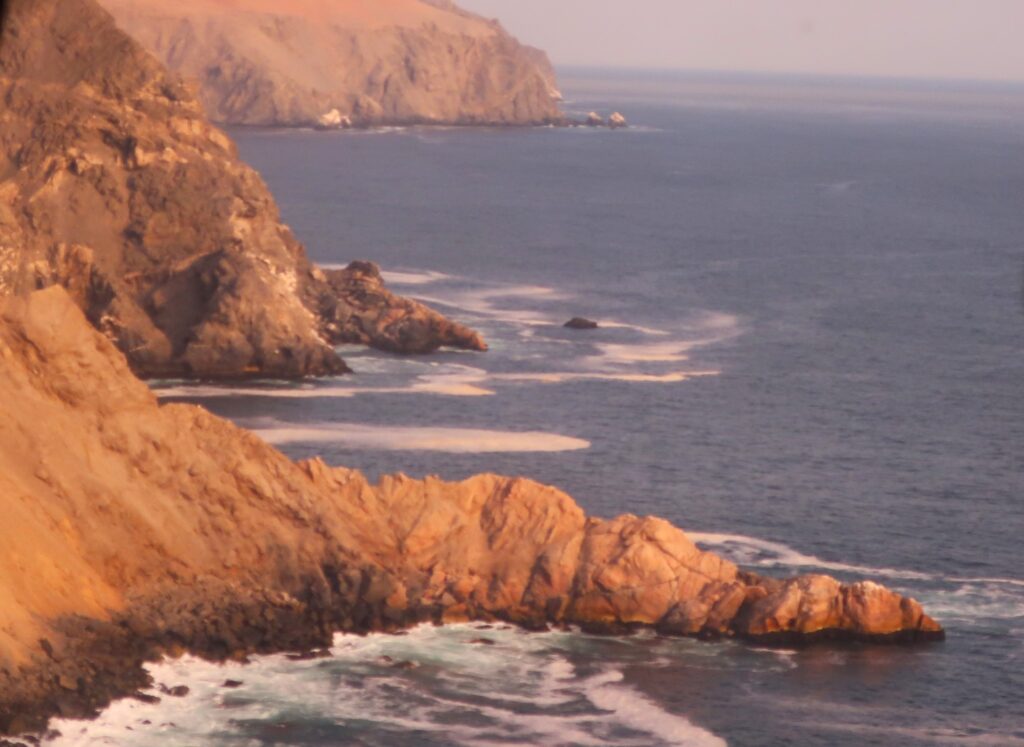
The photos are blurry because they were taken through a bus window. Sorry.
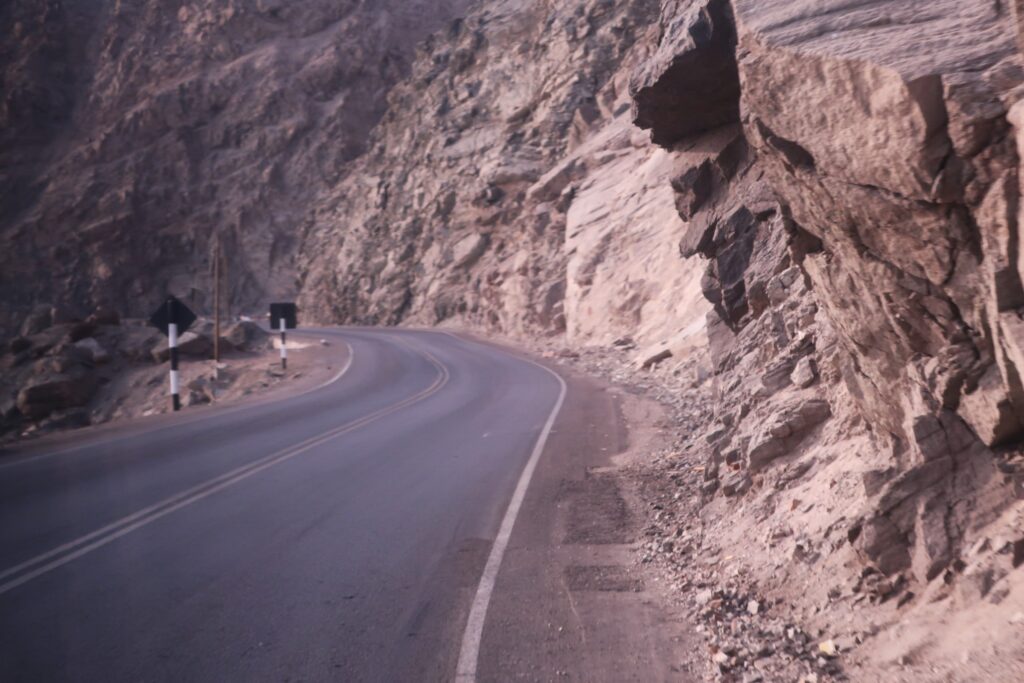
It’s a great shame that this marvelous scenery is marred by truly staggering amounts of garbage on the side of the road.
Late that evening, we arrive in Nazca. Nazca is the home of the famous Nazca Lines.
The only way to appreciate these is to fly over them in a small plane.
One of the more, um, original people on our flight is Peter, from the Czech Republic. He doesn’t speak a word of Spanish or English, but we manage to communicate using a combination of mime skills and Google Translate.
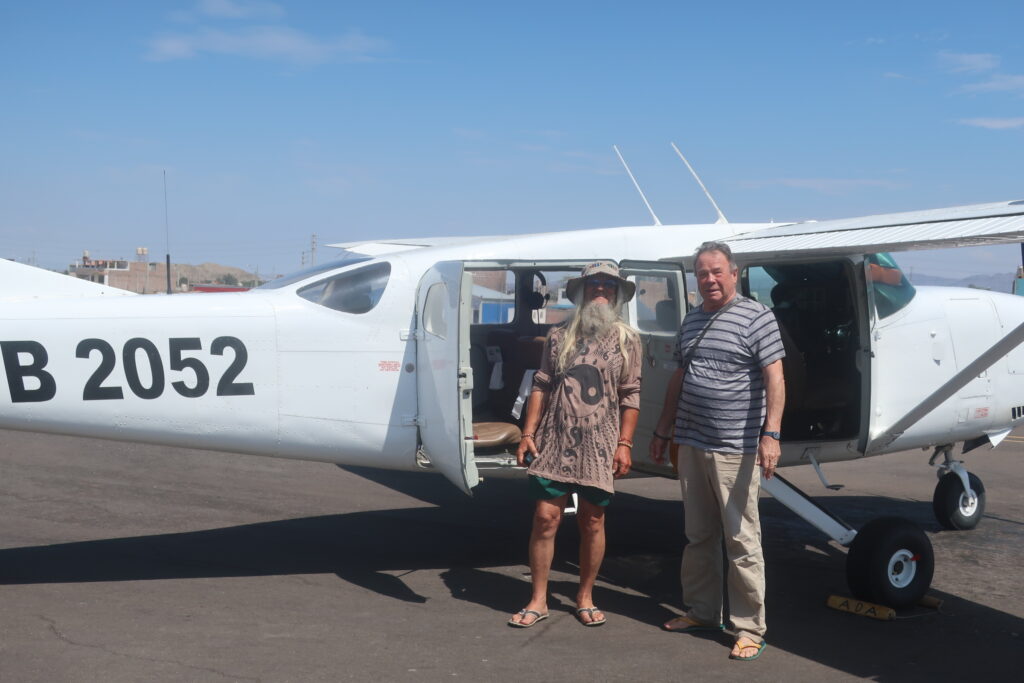
And so we take off. At least half of the clients suffer from air sickness.
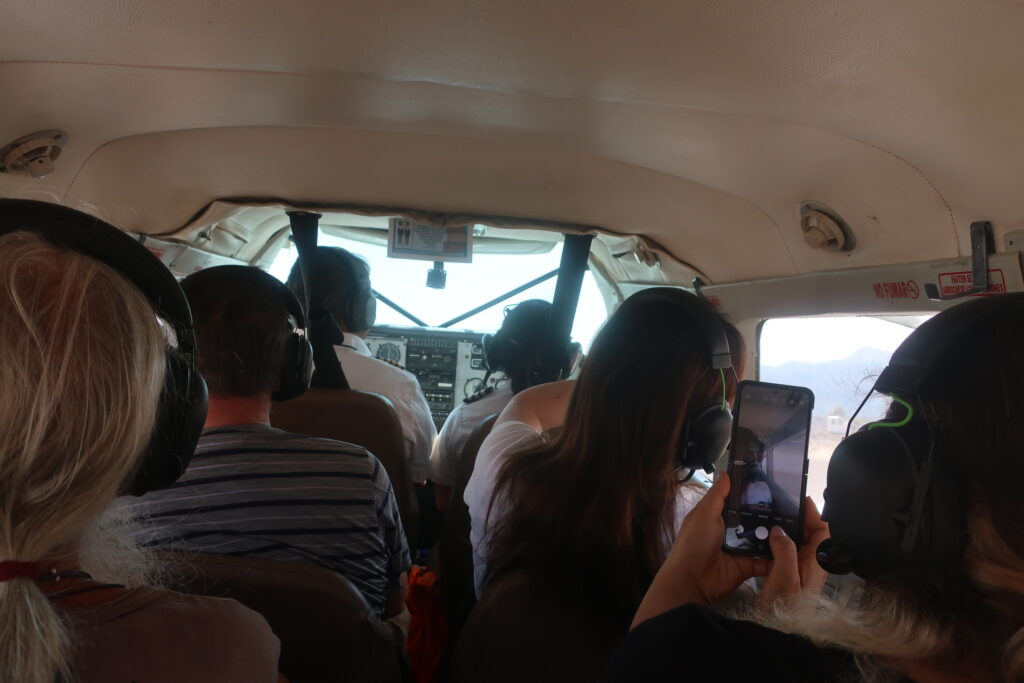
Everybody manages to suffer without any actual vomiting, so that’s OK. The problem is, the aircraft has to do a lot of maneuvering so that both sides get to see the lines. (Or ‘geoglyphs‘, as they are known in Institutes of Higher Larnin’.)
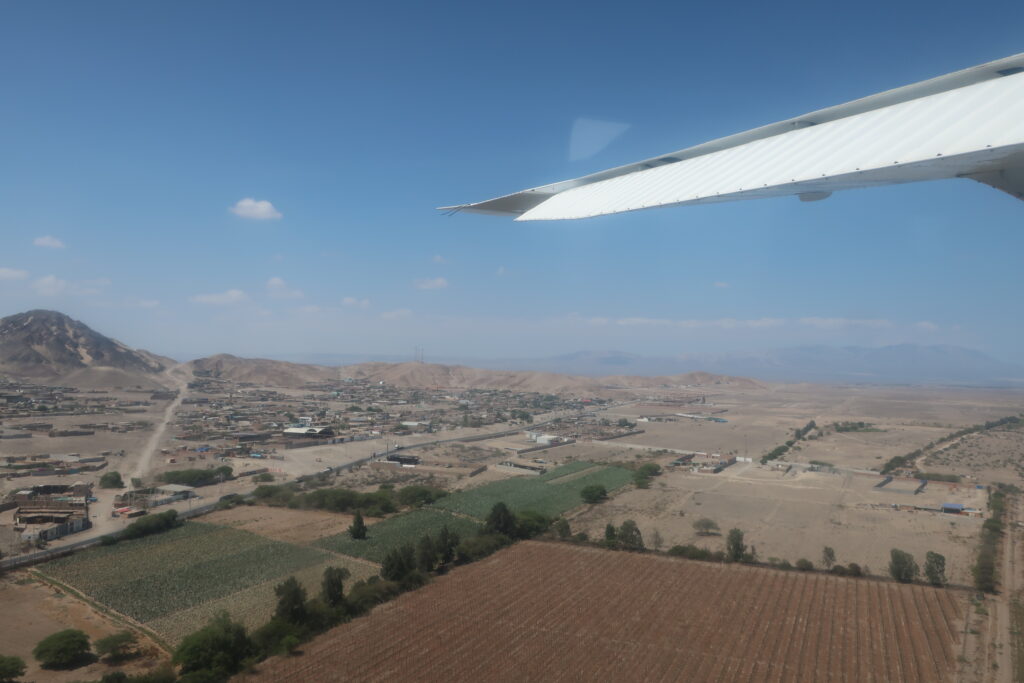
I’ve been fascinated by these even from the ridiculous Erich von Däniken days.
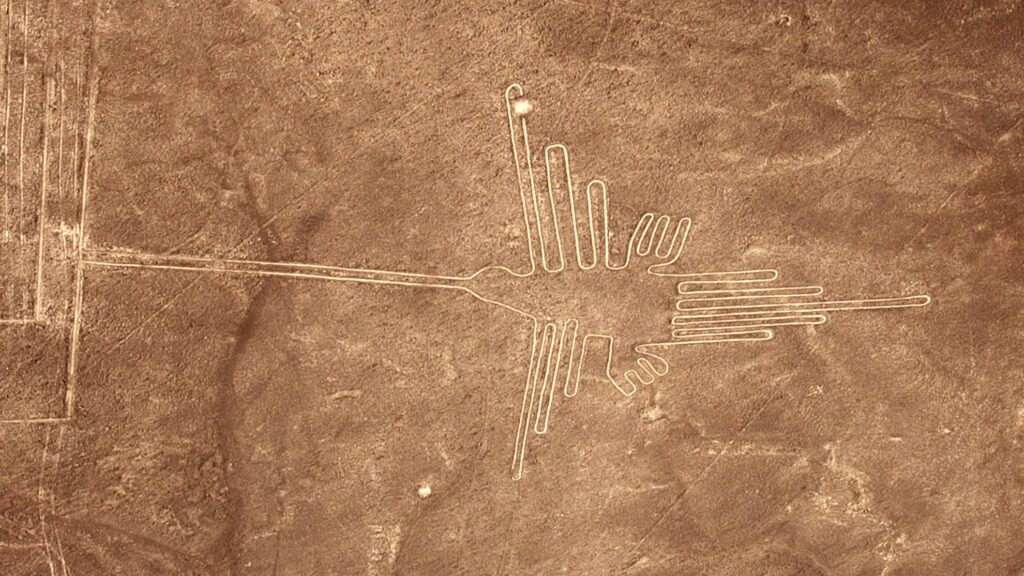
They are unique and quite incredible. Who came up with the idea of making these creations, and why?
The truth is, nobody knows, although I’m sure many academic careers have been founded on theories and speculation.
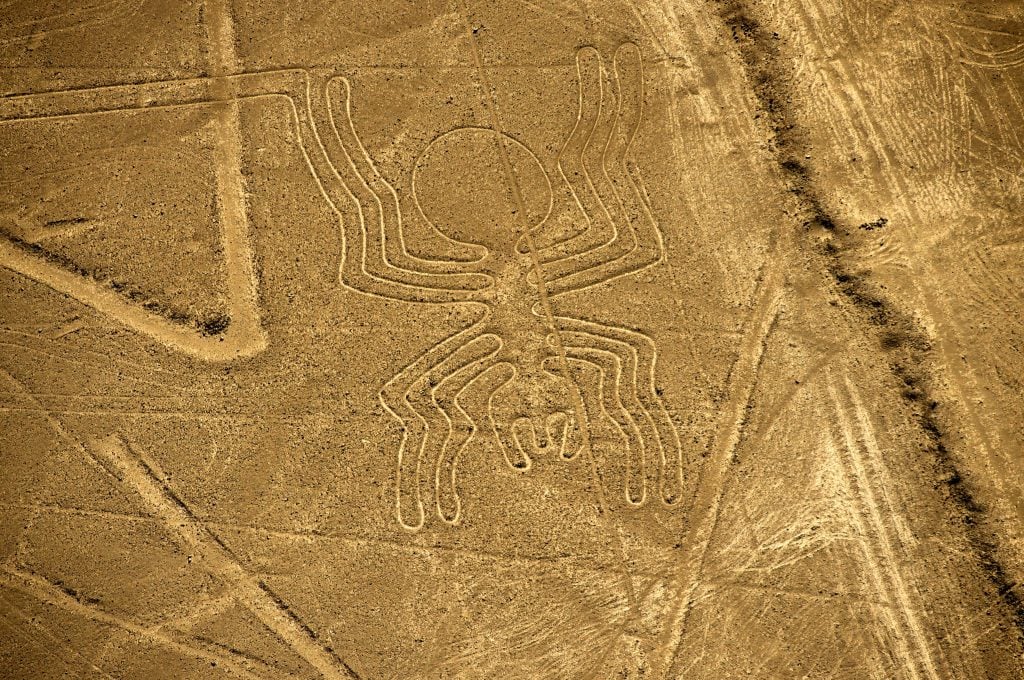
To quote Wikipedia: ‘Determining how they were made has been easier than determining why they were made.’
There are over 700: we manage to see 23. No wonder for some people, studying these is their life’s work.
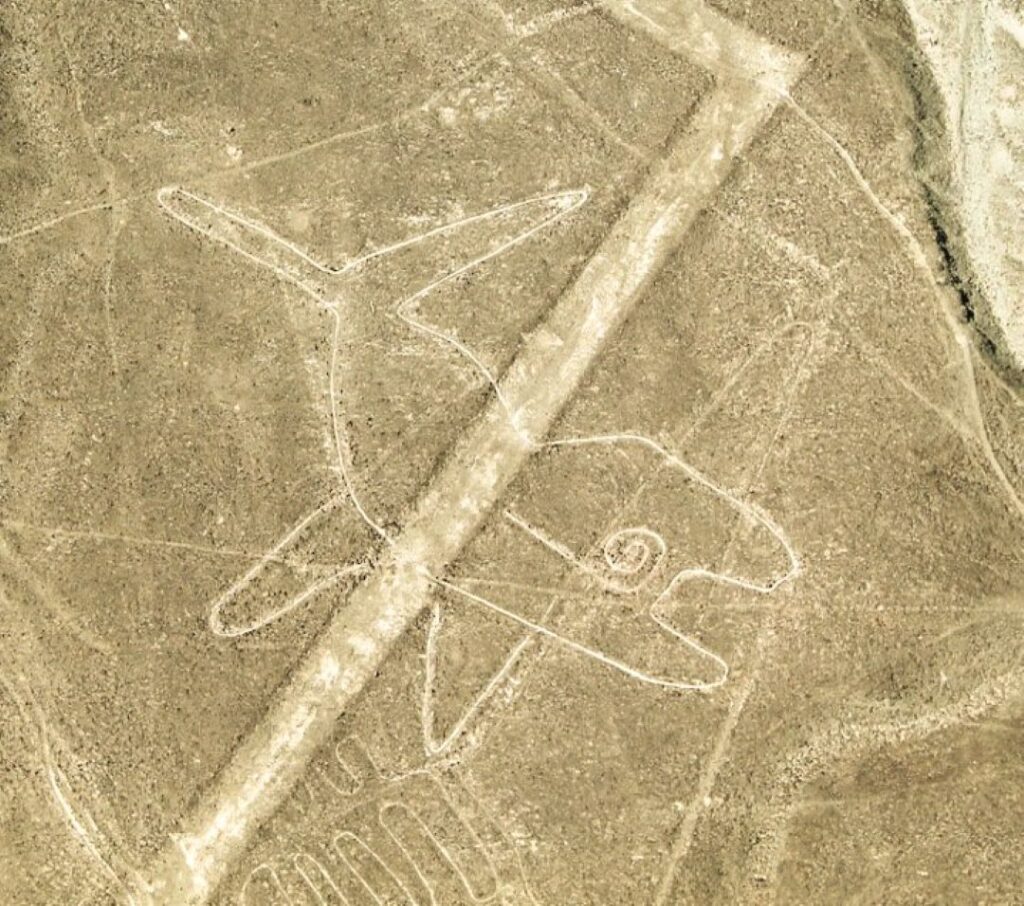
Pretty amazing stuff. We hope they can survive the – seemingly impossible-to-stop – onslaught of overpopulation that is beginning to encroach on the area of the lines
An overnight bus takes us to Lima.
Our accommodation is in the Miraflores neighbourhood of Lima. Both visitors and inhabitants flock to Miraflores rather than risk their lives in the increasingly run down, dangerous and impoverished historical centro.
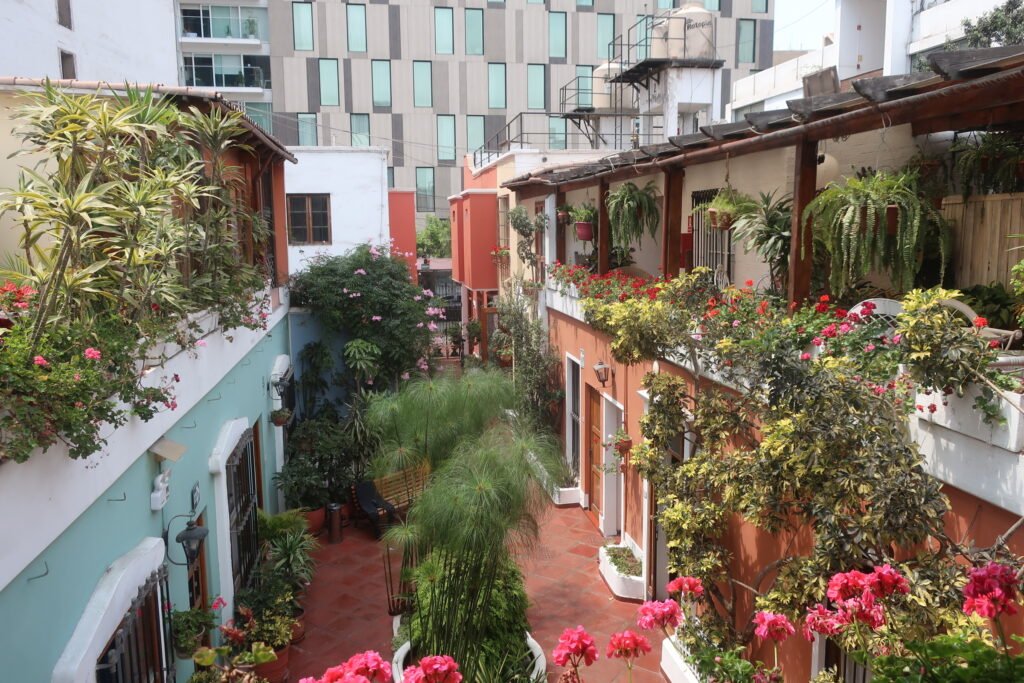
There is civilized life in abundance here. In a park, people from all walks of life pair up and dance, just for fun.
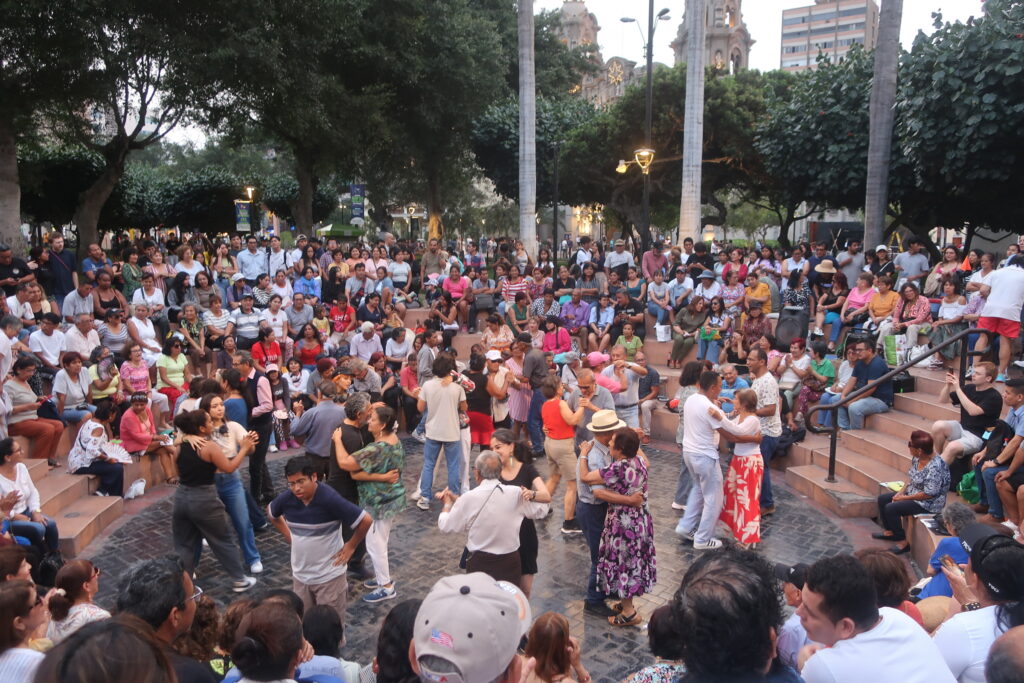
Now this is the very height of civilization: Miraflores has a parque de gatos.
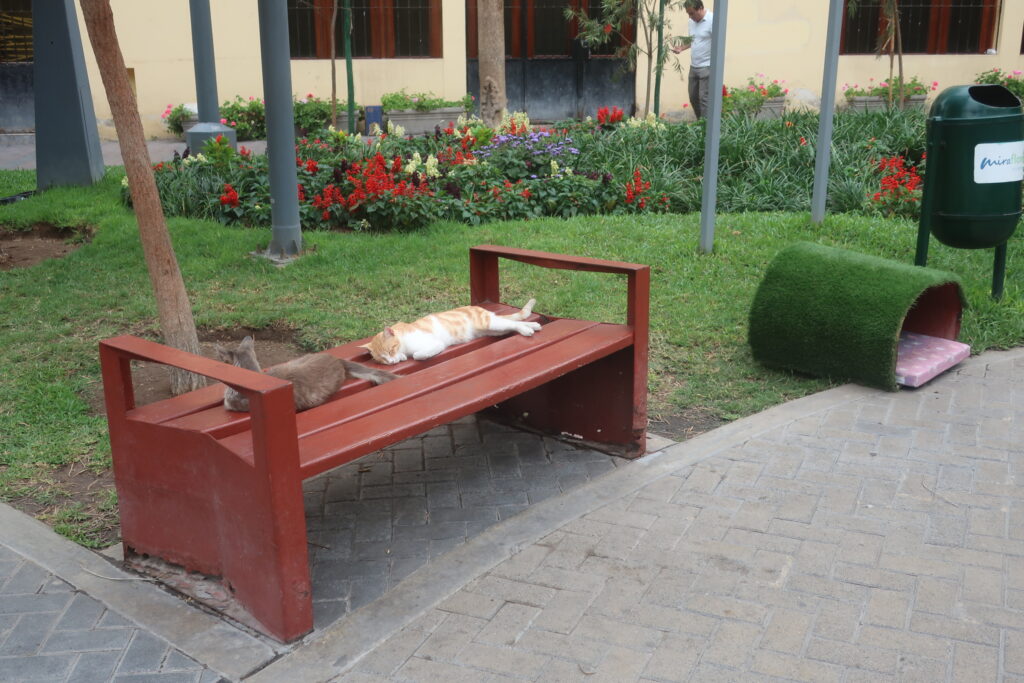
Scores of kitties are well looked after by volunteers.
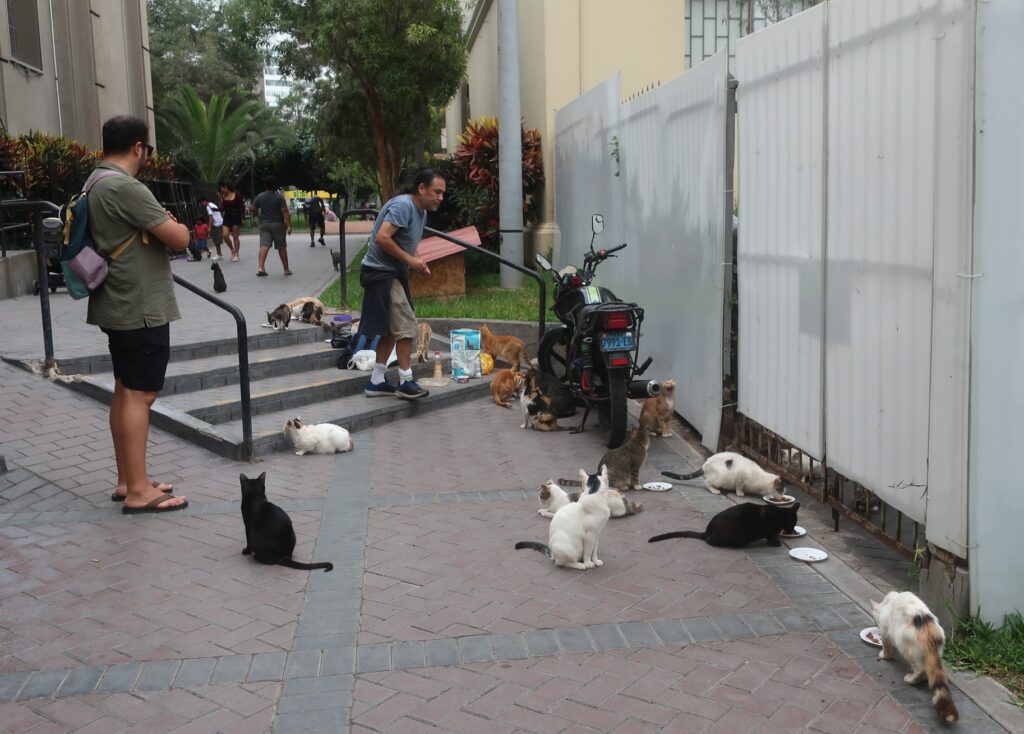
We have our own resident cat in the hotel.
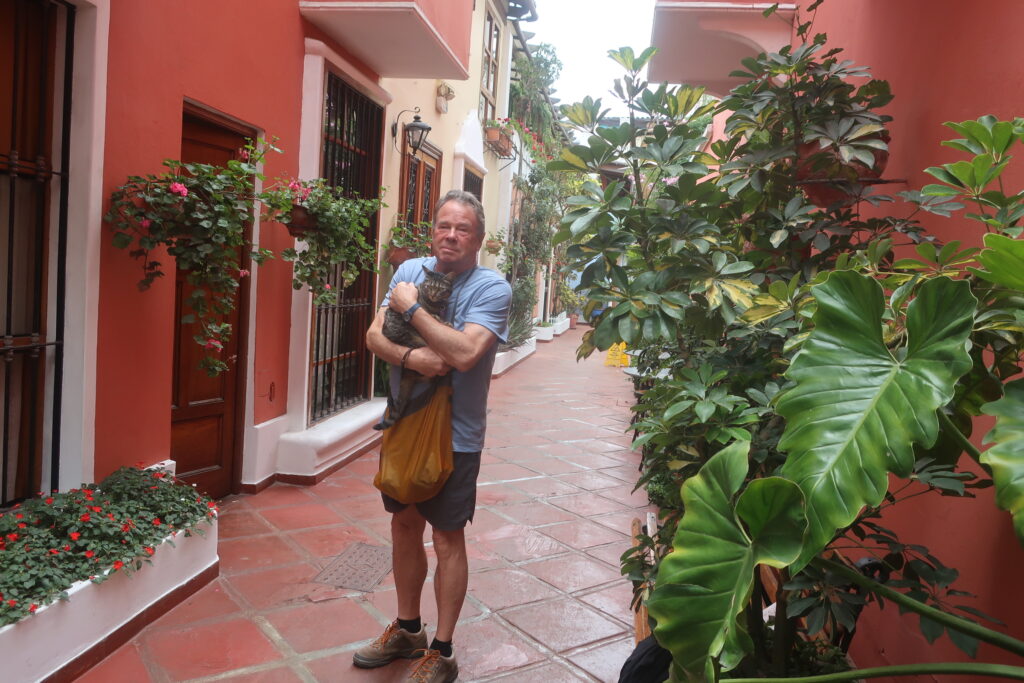
One day, we visit the Museo de Oro. Less famous than its namesake in Bogotá, it still has nifty stuff.
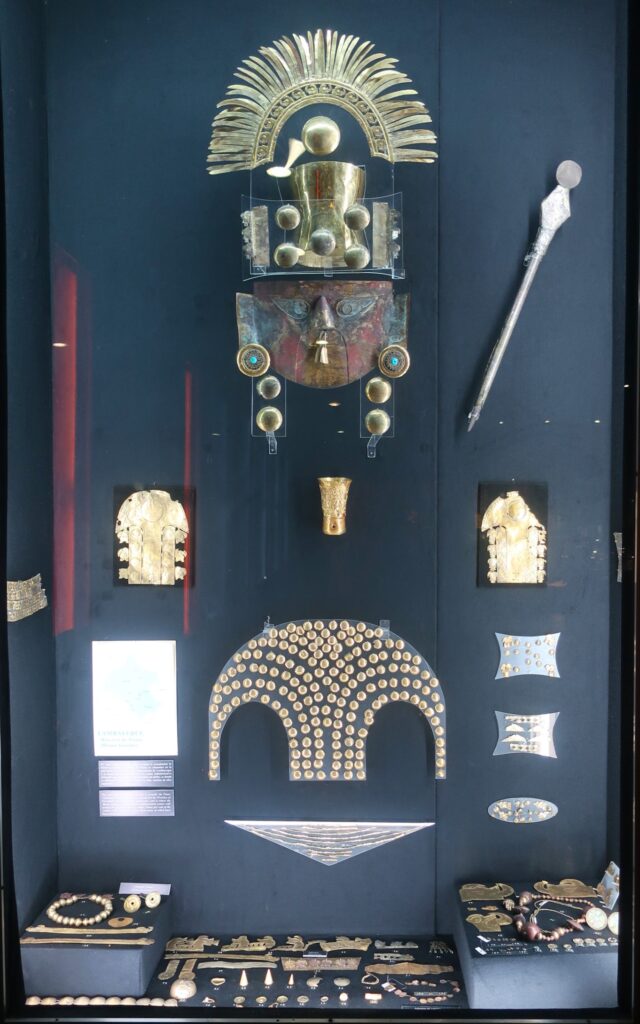
Besides its admirable collection of pre-Columbian artifacts, it also has thousands of weapons, armour, and military uniforms, unfortunately in a state of neglect and decay. That’s what happens when you bequeath your collection to the Peruvian government. (In comparison, see the magnificent Larco Museum below. We’re certain that the dead hand of government has no part in its excellence.)
Another day, we venture into the centro.
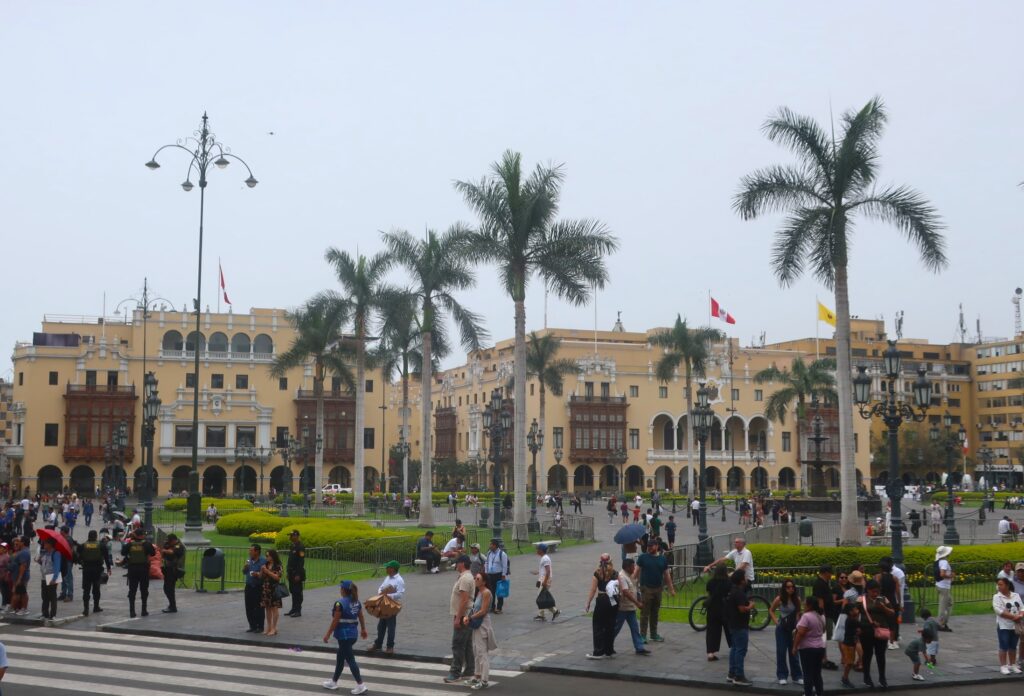
It’s safer in the daytime, with lots of people around.
There is some kind of fiesta going on, with groups representing, we guess, different barrios in town on parade.
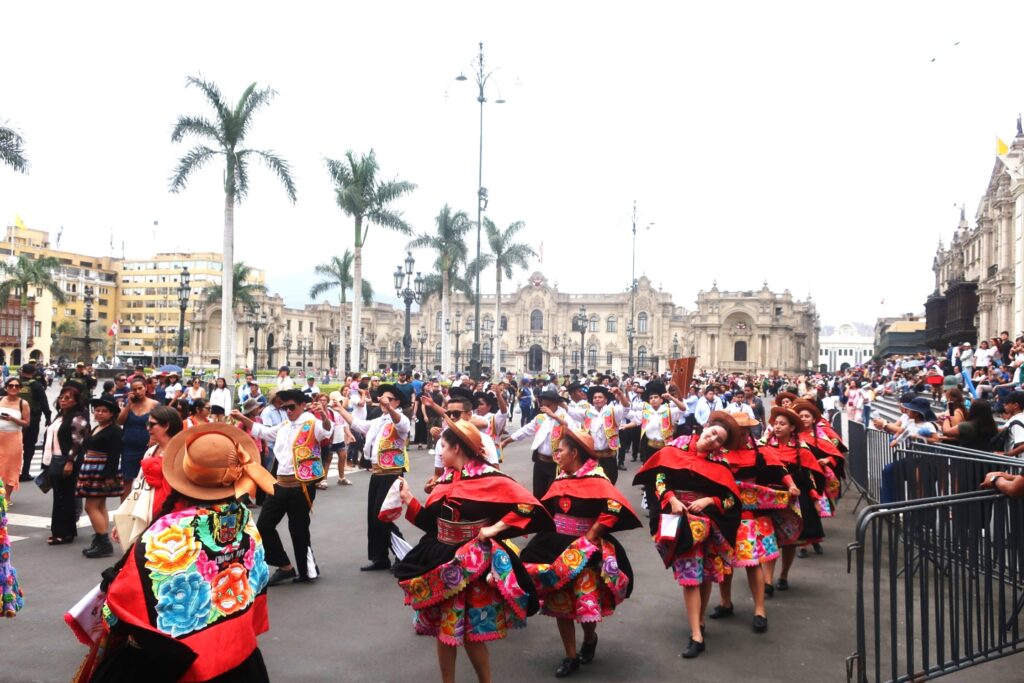
We come across a Casa de la Literatura Peruana in a transformed train station. Very impressive. We should have one of these in Canada.
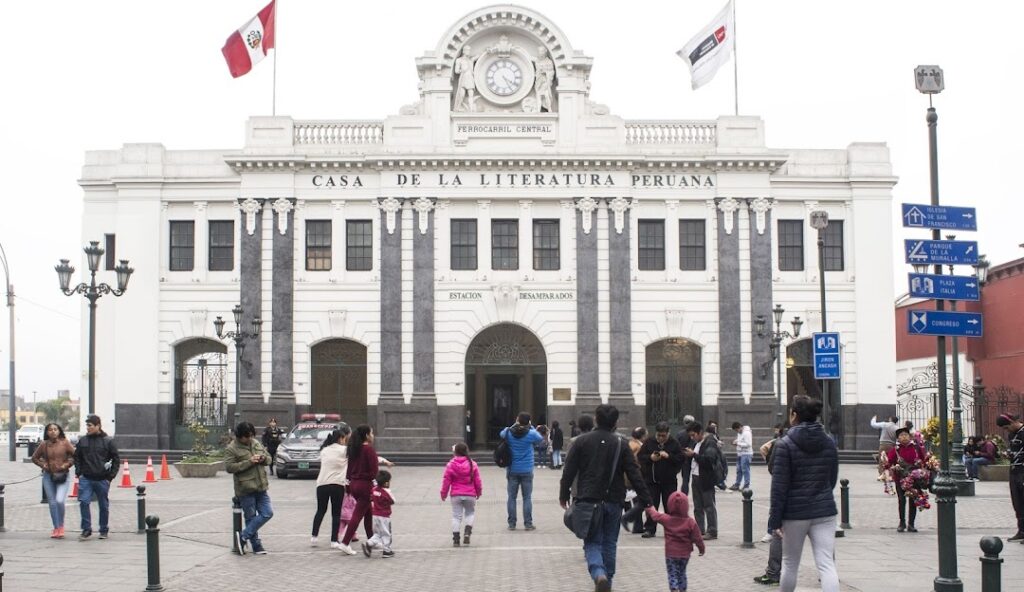
Another museum we visit is the Museo de Arte de Lima (MALI for short). It is unexpectedly well-curated, popular, and well-run, unlike the dysfunctional snake pit that is the National Gallery of Canada.
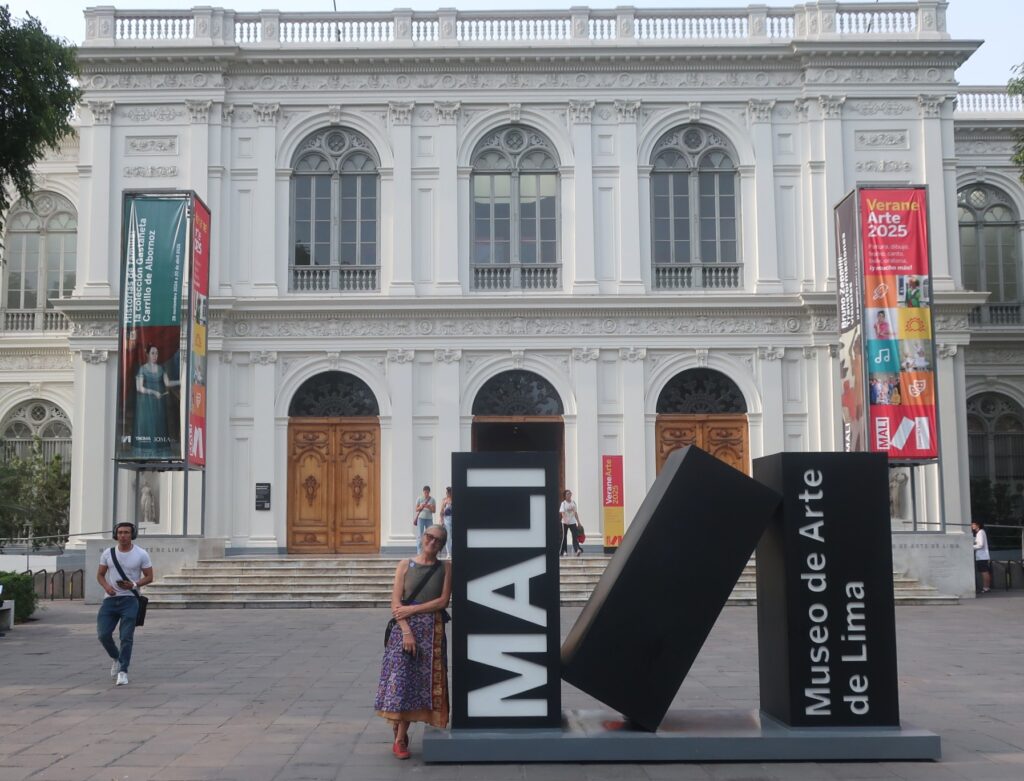
Sight or Insight of the Day
In Lima, we visit the incomparable Larco Museum. This museum is, at the very least, on par with the one in Santiago. Descriptions are given in half a dozen languages. The English is perfect. It’s obvious that there are powers beyond the Government of Peru at work here.
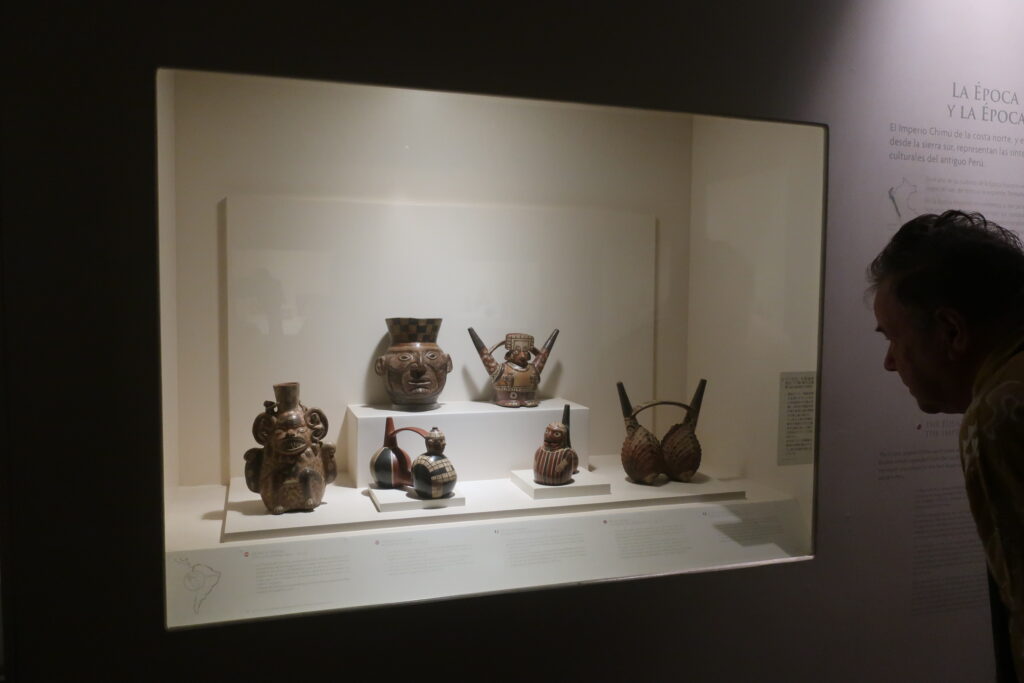
By far the largest number of exhibits are pre-Inca. Maybe it’s something in the water, but Peru had many cultures that had cities, surplus produce, and highly skilled specialists centuries – even millennia – before the Incas. Especially in ceramics and textiles, we’re talking about ancient Egyptian levels of perfection here.
For instance, the wrinkly guy portrayed here even has a nose that’s slightly askew for verisimilitude.
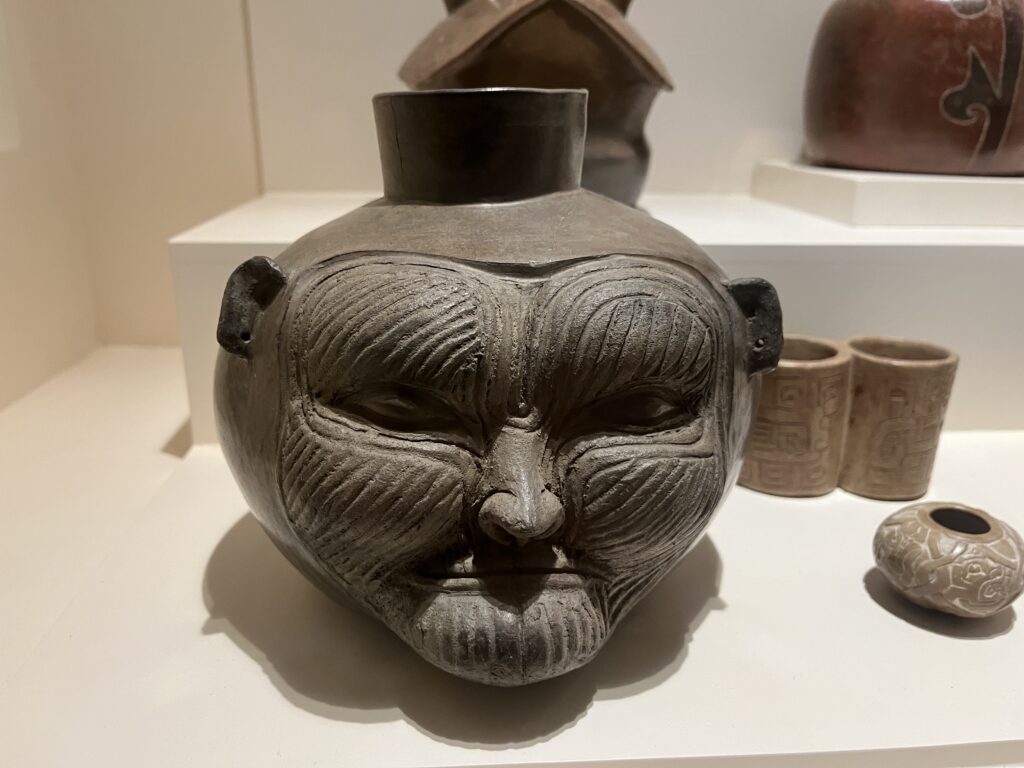
These ceramics are thought to be authentic portraits of the subjects.
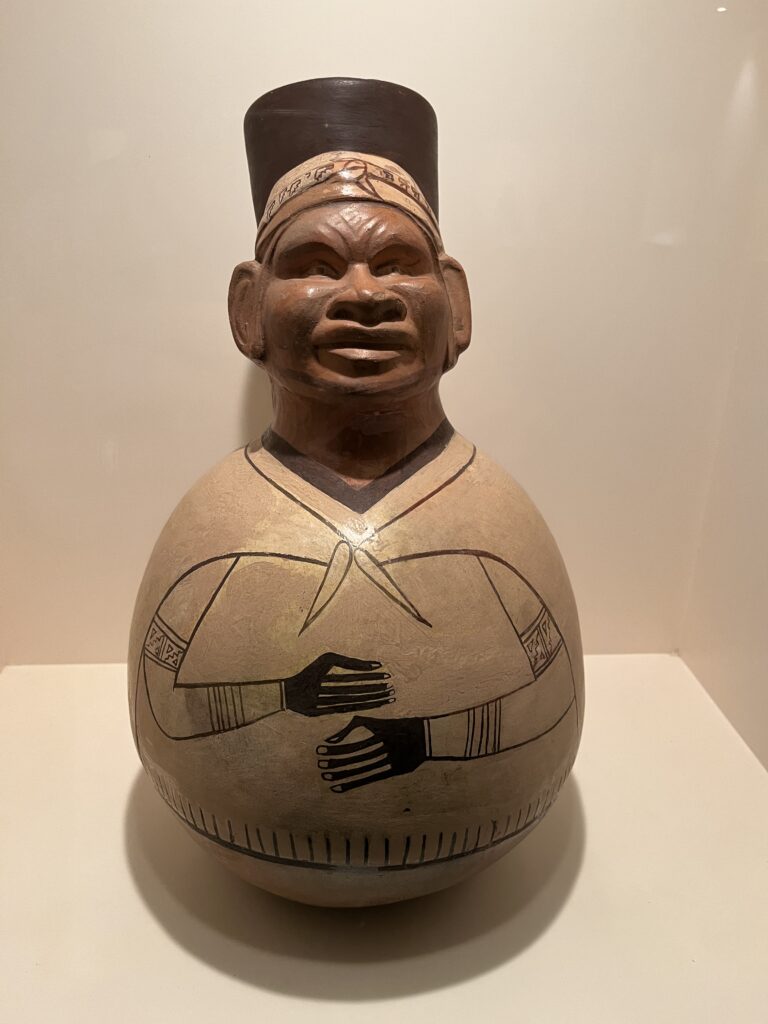
Most of the items were found intact in graves. Fortunate that the Spanish never found them, otherwise it’s probable they would not have survived.
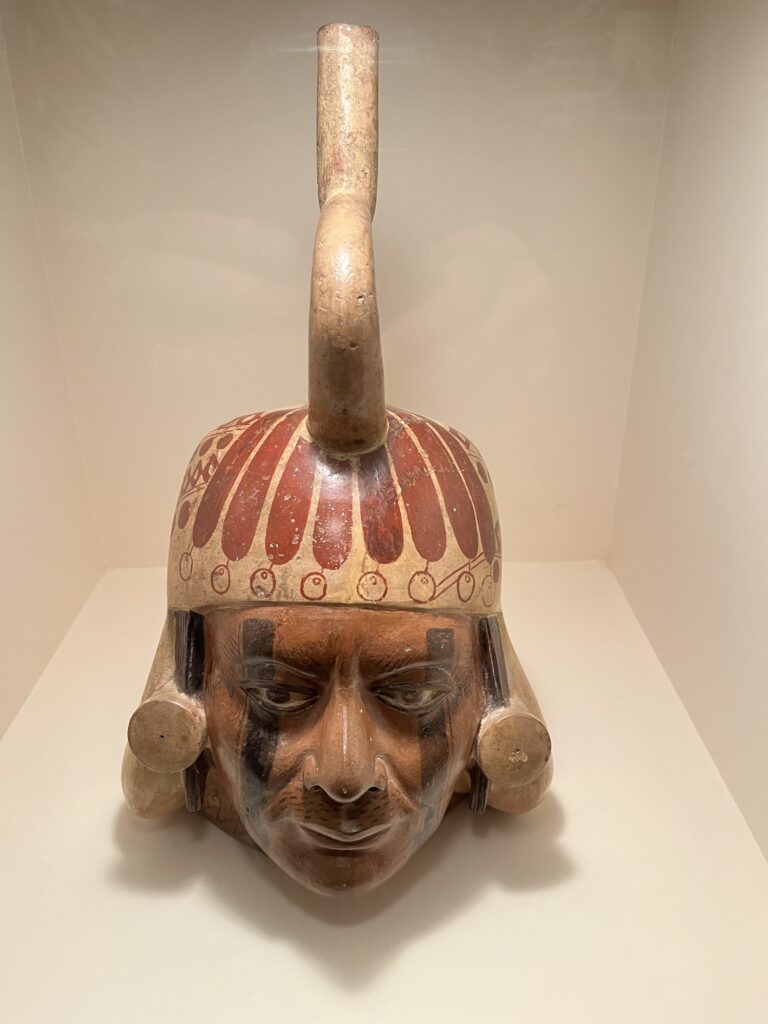
Other material goods are just as impressive. In comparison, the products of the indigenous people in North America often resemble the output of a pre-school art project. Maybe it’s the rarified atmosphere up here.
